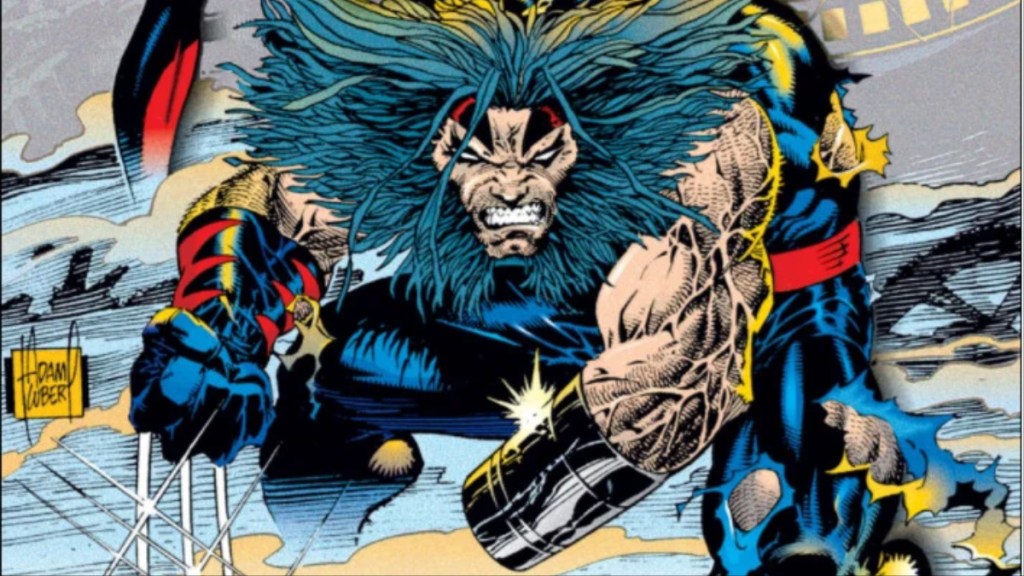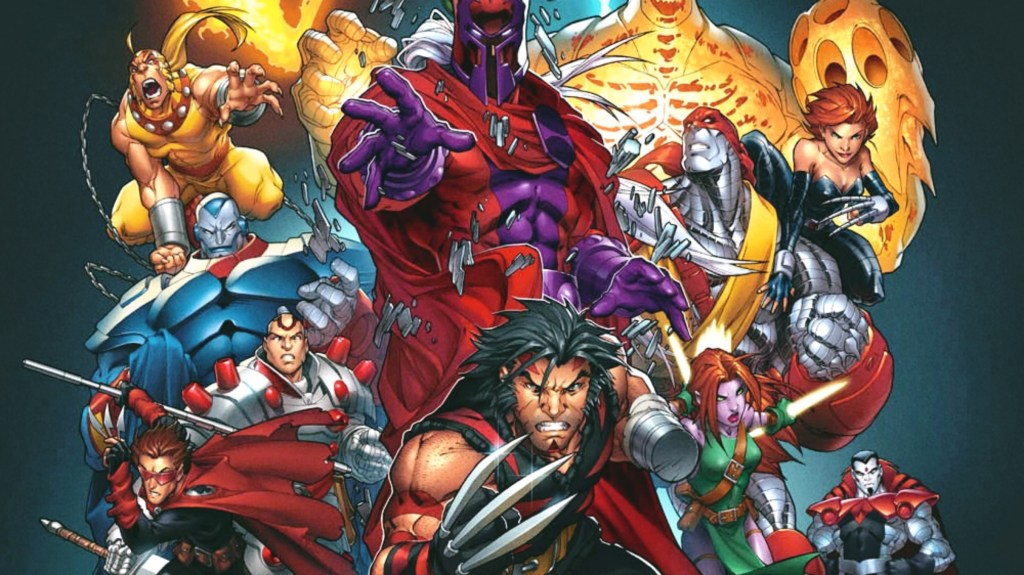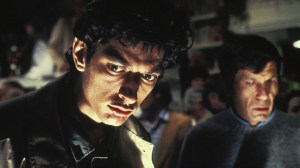The X-Men are a very storied franchise, their adventures taking them all over space and time. The X-Men are especially known for their multiversal adventures. While Marvel doesn’t always use its multiverse, the X-Men have been going to dark alternate universes for 45 years now starting with the classic “Days of Future Past”. “Days of Future Past”‘s dark future has become somewhat canon, with mutants always losing the evolutionary war against the Sentinels. However, there is an X-Men alternate universe that is arguably just as popular and, in the opinion of many fans, including this one, is the best of them all — the dark Earth of The Age of Apocalypse. This 1995 story took X-Men readers to a world where Charles Xavier was killed in his youth in Israel, one where Apocalypse rules the Americas, fighting a war against the Eurasian High Human Council, while Magneto leads a desperate rebellion against the ancient mutant.
Videos by ComicBook.com
The Age of Apocalypse was an unprecedented story. It took the bestselling titles in comics and put them in an alternate reality for months, a very risky proposition at the time, and fans loved it. The Age of Apocalypse turned 30 in December of 1994 (X-Men Alpha #1 came out in the last week of the year), and comics have changed a lot over that time. But one thing has remained the same — that The Age of Apocalypse is the best of the best. Somehow, this edgy X-Men story from the decade of extreme stands up decades later.
The Age of Apocalypse Isn’t Perfect but It Is Amazing

The Age of Apocalypse spanned eight four issue miniseries, two two issue miniseries, and two bookend issues — X-Men Alpha, Astonishing X-Men, Amazing X-Men, Weapon X Generation Next, X-Man, Factor X, Gambit and the Externals, X-Calibre, X-Men Chronicles, X-Universe, and X-Men Omega. That’s forty comics to get the whole story. Out of those, Alpha and Omega are obviously crucial. Astonishing, Amazing, Generation Next, and Gambit and the Externals all contain the main plot of the story — the X-Men stopping Holocaust’s human cull all while helping evacuate humans from North America as Generation Next sneaks into the Seattle Core to find Illyana Rasputin and Gambit and the Externals go into to space to get the M’Kraan Crystal. Weapon X sees Logan and Jean Grey helping the humans as well, with Grey leaving him when she realizes the humans’ apocalyptic plan. Logan soldiers on to find Gateway, who will help navigate a fleet of nuclear bombers to North America, facing off against Apocalypse’s cyborg corps led by Donald Pierce. X-Man followed Nate Grey, a clone created by Mister Sinister to kill Apocalypse from Cyclops and Jean Grey’s DNA, as he tries to escape re-capture and meets his maker. X-Calibre is all about Nightcrawler looking for Mystique and Destiny. Factor X is the Cyclops and Havok book, as the two brothers vie for power under Apocalypse. X-Men Chronicles is the flashback book, giving us two stories from the X-Men’s history, while X-Universe shows readers what Marvel’s non-mutant heroes are up to.
If we’re being honest, Gambit and the Externals and X-Calibre aren’t the best, but they both have good art. X-Man is good, but not great. Chronicles and X-Universe are both really good. The rest are all timers, with Generation Next probably being the best of the bunch, although Weapon X is a must-read for Wolverine fans as well. Amazing, Astonishing, and Factor X are all excellent. Alpha and Omega are outstanding, perfect bookend books that set up and close down the most interesting Marvel alternate universe ever created. The reason for that is simple — length. In this case, size definitely mattered.
RELATED: Apocalypse’s Heir Returns to Set Up Marvel’s Next Major X-Men Event
The reason why The Age of Apocalypse endures for so long is how much time that fans spent there. Writers like Scott Lobdell, Fabian Nicieza, Larry Hama, Mark Waid, Jeph Loeb, Howard Mackie, John Francis Moore, Terry Kavanagh, and Warren Ellis got to build the world as they were building the plots of their issues. These are all very different versions of the characters we love, but they all feel right. There’s something about reading the X-Men books back then and then getting Age of Apocalypse, seeing the differences in real time, and witnessing how the creators made it all work that was intriguing. Reading without that kind of knowledge, though, is still a rewarding experience, because the worldbuilding is generally outstanding. On top of that, the plots are pretty great in general. All of the books have interesting premises, and while things can get a little edgy with the violence and such — it’s the ’90s after all — it all works. The ’90s edge actually works in this story’s favor — the darkness of the story is kind of the point, and the brutality sells it beautifully.
The art is, of course, outstanding. Even with the defection of the Image founders, the X-Men books still had the best artists in the industry, and by 1995 there was a core of brilliant artists on the books. Andy Kubert, Adam Kubert, Joe Madureira, Chris Bachalo, Tony S. Daniel, Carlos Pacheco, Salvador Larocca, Steve Skroce, Ken Lashley, Terry Dodson, Ian Churchill, Steve Epting, Roger Cruz, and Joe Bennet all understood their assignment. The disparate artists created a design language for The Age of Apocalypse that spanned all the books, giving them a visual style all their own. There wasn’t anything like The Age of Apocalypse on the stands, and it brought an energy to the X-books that hadn’t been around since the 1991 relaunch. These were top shelf books, and they looked the part. Even the paper and cover quality of the books are outstanding, especially if you can find well-cared copies. The ’90s were a time of spectacle, and The Age of Apocalypse was definitely a spectacle. However, it was also something else — a meticulously planned and beautifully executed story that took readers to another world and did such a good job of creating that world that it felt like it had always been there. That’s why The Age of Apocalypse is still so powerful.
The Age of Apocalypse Is Immortal

There’s always been something about The Age of Apocalypse. I was there. I remember when the rumblings about the cancellation of the X-Men books because they were missing from solicits after a certain point hit. It was an insane thought — the X-Men books were basically the top ten (Wolverine was a top ten book in ’90s, it was awesome) and what we got in December 1994 — the end of every X-Men story with a wave of crystal, shattering in the last panel — got everyone talking. There was this promo art from Bill Sienkiewicz of Legion standing over the coffin of Xavier screaming with the tagline, “The end. Because there never was a beginning,” that has stuck me with for these three long decades. It was amazing and then X-Men Alpha happened. It was amazing and what we got was an all time greatest story. Marvel has often tried to recreate the success of The Age of Apocalypse, but they never succeeded. Sure, there have been good sequel stories like “The Dark Angel Saga”, but nothing was like the original.
The Age of Apocalypse is both a moment in time and a special story. Marvel has created some cool alternate worlds since then — the dark future of the Earth X trilogy is cool and there was also the recent Avengers: Twilight — but they aren’t The Age of Apocalypse. Nothing is. It’s an amazing synthesis of words and images, of plot and action, of character and spectacle. If you’ve never read it, go read it. Now. You’ll find a story that is on a level you’ve rarely imagined. It’s not always perfect, but tell me you don’t get to end of Generation Next #4, put the book down, and just exhale. Go ahead. You’ll see. That’s The Age of Apocalypse. It isn’t always perfect, but somehow, it also is.








